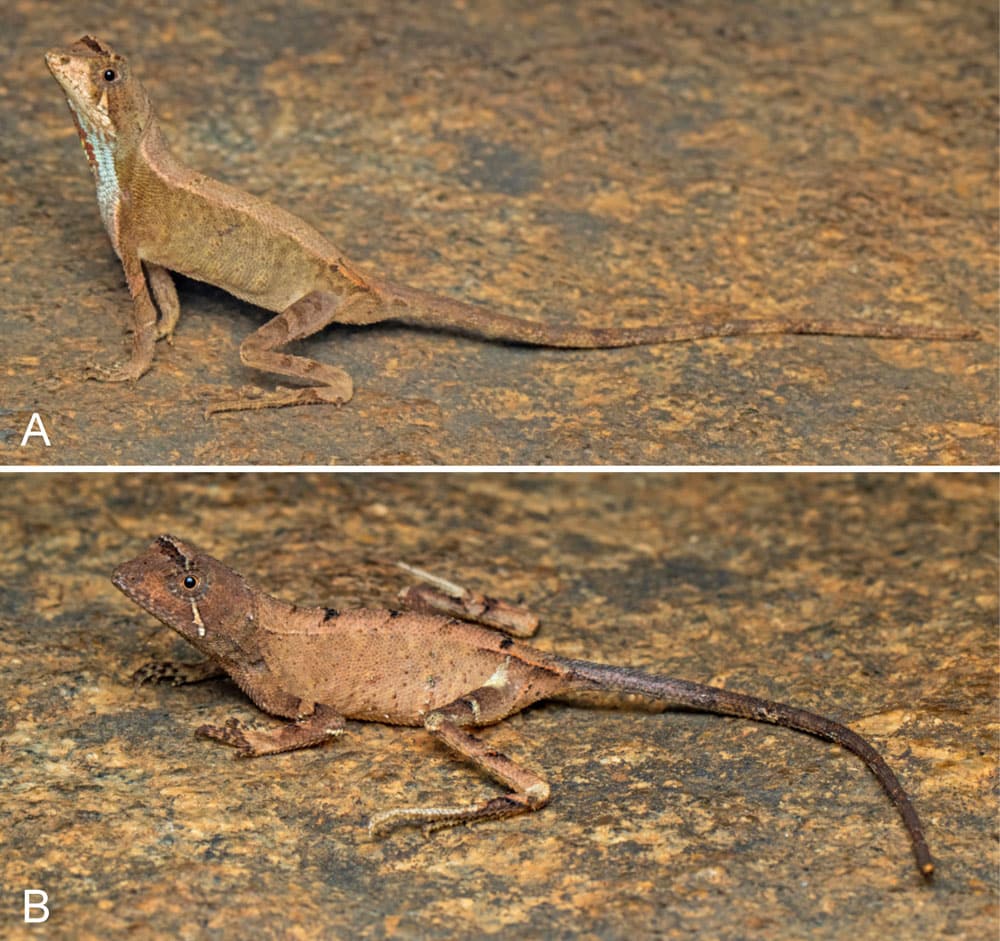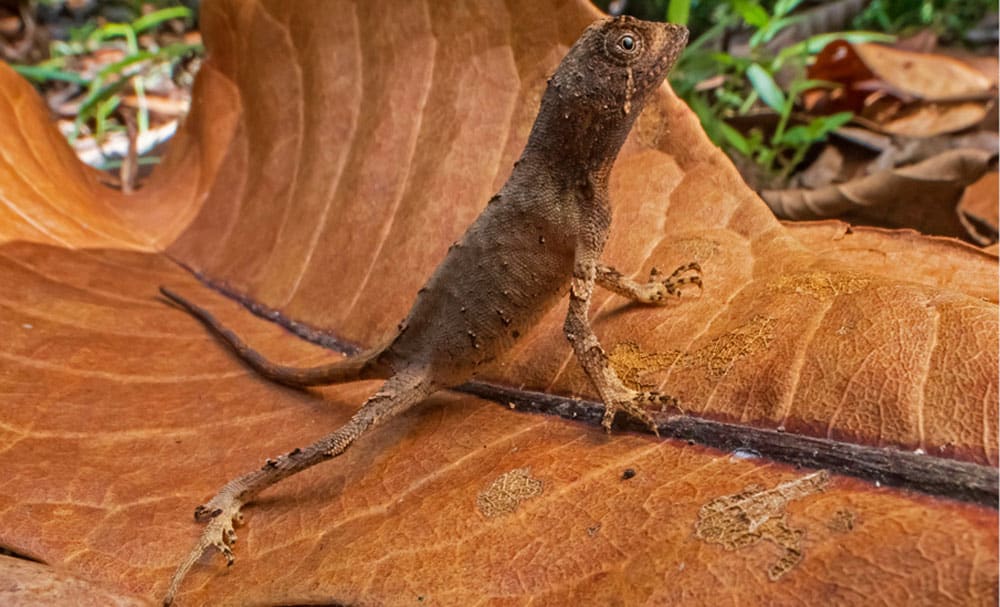Agasthyagama edge is named after the Zoological Society of London’s EDGE of Existence Program.
Researchers have discovered and described a new kangaroo lizard species of the Agasthyagama genus from the Western Ghats mountains of India. The lizard, Agasthyagama edge sp. nov. is a sister species to Agasthyagama beddomii. Agasthyagama edge is named after the Zoological Society of London’s EDGE of Existence Program. This new finding adds a second species in the Agasthyagama genus.
More Than 80% Of Amphibian Species In India’s Western Ghats Under Threat Of Extinction
Agasthyagama edge is a small agamid lizard with a snout to vent length of 29-44.7mm. It lives in tropical semi-evergreen forests at elevations of 636 to 835 meters. Its body coloration is a dull, olive brown with a darker head and darker enlarged scales. It features a pale peach band behind the head that continues down the tail. The throat area has a dark brown stripe that starts from the “posterior half of the mentum, gradually becoming elongated brick red stripe abruptly ending at posterior half of neck, the latter half of stripe forming an elongated oval shape with a row three to four bluish-white scales.” Males have a cream colored throat patch during the mating season.

Agasthyagama edge sp. nov. in life: A uncollected adult male from Kulamavu, Idukki; B uncollected female from the same locality. Photographs by Sandeep Das.
The researchers note in their paper a level of surprise in that this kangaroo lizard has not been discovered before, especially given the area in which it was found had been heavily explored during the times of Indian colonization by England. They do say that Agasthyagama edge is not as common as its sister species, Agasthyagama beddomii. the two species are separated geographically by 80km. The researchers found more lizards in undisturbed areas of vegetation versus disturbed areas such as roadside vegetation and plantation areas.
The complete research paper, “Discovery of a new species of kangaroo lizard (Squamata: Agamidae: Agasthyagama) from the southern Western Ghats of India” can be read on the open access Vertebrate Zoology website.



